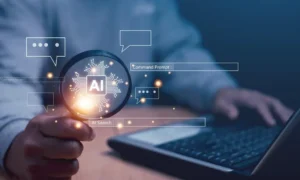The world was hit hard by the emergence of the Coronavirus, popularly called COVID-19 or COV-19. As the virus continues to spread at an alarming rate amidst strict measures, it is about time we asked ourselves, ‘what more can technology do to reduce the spread of the virus? No matter how little.’
The World Health Organization (WHO) has continually underlined the importance of ‘flattening the curve’, calling on countries across the world to impose public health measures in this regard. The curve refers to the projected number of people that will be infected by the virus and flattening that would mean slowing the rate of person to person infection.
Technology is doing a lot already in the global fight against the pandemic, still, we believe there is more to be done. For one, a Digital Data Capture and Management System can beef up surveillance and detect cases promptly; thus providing an effective response for suspect isolation and management, contact tracing, identification of transmission chains, rapid diagnosis, vaccine monitoring, and so much more.
Looking at patterns from previously successful combat tactics in cases of epidemics, here are 4 ways we propose a Digital Data Capture and Management System will work to flatten the curve and combat the spread of Coronavirus:
Digital Data Capture and Documentation at Entry and Exit Points
This is already an ongoing, strict process at gated estates, apartment buildings and office blocks, where visitors input their textual proof of identity in a logbook before they enter and after they leave. However, only a few can boast of doing this the digital way, the rest still use paper-based visitors logbooks. During this period of the Coronavirus pandemic where surface touch should be avoided, it must be a taboo to allow people to pick up the pen to write or touch the logbook in any way. This, therefore, begs for a digitized system that allows only one handler.
The scenario of a digitized logbook will go this way: A designated security guard posted at the entry/exit gate uses a data capture solution already downloaded on a smartphone to capture the details of visitors from a reasonable distance. Details could be textual such as name, address, phone number, house destination and so on; and also a live image capture of the visitor. The data will immediately be moved to a back-end system monitored by a designated admin. This will create a standard digital database, with unlimited space, that can date back to months, tracking who goes in, out, and where in case there is a need for that information in the future.
Contact Tracing
Contact tracing is a core surveillance activity for this period during this period. This involves the identification of persons, their routes and timelines, to know who they came in contact with and when. Right now, contact tracing involves government’s appealing to people to turn themselves in if they had made contact with confirmed cases.
To do this effectively, there must be proper prior documentation. Paper-based contact tracing, besides encouraging surface touch, is sure to include erroneous data collection and promises a tiresome process of retracing.
A Digital Data Capture and Management System, however, has the benefit to improve data completeness, timely capture storage, accuracy, and data organization. This will allow for the rapid identification of the movement pattern of people who become symptomatic and the transmission chain in that particular location. This will also improve data exchange, as the data can be easily downloaded and exported to government bodies like the CDC for proper tracking and for the purpose of informing people in the transmission chain to self-isolate and get tested.
Clinical Trials Documentation
To effectively and efficiently carry out a nation-wide clinical trial, a Data Capture and Management System is a necessity. This system will allow for a digital and more mobile approach to clinical trials using web-based forms to facilitate the quick reporting of data and trends, and thus, quick decision making. Clinical staff can record daily reports, collect location-based results, export data for analysis, and visually document hypotheses.
This system will also create a centralized cloud-based healthcare data network to document volunteers, experiments, observations, causes and effects, vaccine monitoring and real-time analysis of implemented measures and administered trial drugs during clinical research.
It will also create a data-sharing system, where data can be shared, in real-time, between hospitals and larger bodies like the CDC for proper documentation, following strict data privacy and pre-set access control policies. The digital approach will mitigate against data quality oversight as data anomalies will be discovered faster.
Remote Monitoring of Self-isolated Individuals
The flexibility of a Digital Data Capture and Management System can allow for remote monitoring of individuals in Coronavirus self-isolation. This routine checkup will begin when an individual is asked or chooses to self-isolate for any reason. Healthcare providers will share a link to a monitoring form which the individual can access on a smartphone or any mobile device. In this form, the individual can input their symptoms or lack of it every day until the isolation period is over (usually 14days).
This data is visible to the admins (heath providers or CDC) on an intuitive dashboard so they can monitor the individuals closely and know when to jump in. The data is also location-based so it is easy to flag when isolated individuals have moved from their designated locations.
Conclusively, having given the 4 ways we know technology can help to flatten the curve, we are proposing that every country right now gets started with a Data Capture and Management System that has demonstrated the potential to improve the quality of data collection, surveillance, analysis, and secure data transport.
It is important to note that Coronavirus is rapidly evolving. Stay informed, maintain clean hand and respiratory hygiene, self-isolate if you’re unsure, report yourself if your symptoms are suggestive, don’t panic and stay safe.

































